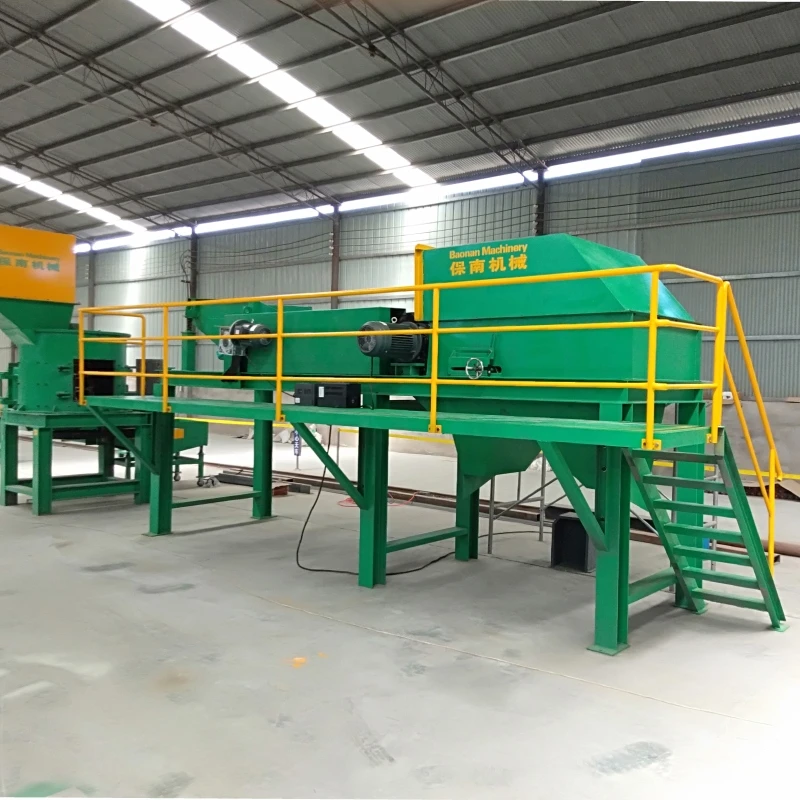

Aza . 27, 2024 08:04 Back to list
Understanding the Prices of Industrial Shredding Machines
In today’s fast-paced industrial landscape, businesses are continually seeking innovative ways to enhance efficiency, reduce waste, and maximize profitability. One key component in achieving these goals is the use of industrial shredding machines. These machines play a crucial role in recycling, waste management, and material preparation processes across various sectors, such as manufacturing, construction, and waste disposal. However, a common question among prospective buyers is what drives the price of these machines?
Factors Influencing the Price of Industrial Shredding Machines
1. Type of Shredding Machine Industrial shredders come in various types designed for different applications. For instance, single-shaft shredders are typically less expensive and suitable for soft materials like plastics and paper. In contrast, multi-shaft shredders are more complex and are able to handle tougher materials, leading to higher costs. The choice of machine type can significantly impact the overall price.
2. Size and Capacity Larger shredders with higher processing capacities naturally come with a heftier price tag. Businesses that require higher output for bulk processing will need to invest in bigger machines, which are often equipped with more advanced features. The size and throughput capacity of the shredder are vital considerations when determining the investment.
3. Materials and Build Quality The materials used in the construction of the shredding machine will affect its price. High-quality steel construction designed to withstand heavy-duty use often costs more upfront but can provide better longevity and reduced maintenance costs in the long run. Additionally, machines designed for specialized applications (e.g., electronic waste shredders) are typically more expensive due to their unique features and components.
4. Technology and Features Many modern shredders come equipped with advanced technology, such as programmable controls, safety features, and automation capabilities. Machines that offer increased efficiency, user-friendliness, and automation tend to be priced higher. Investing in more technologically advanced machinery can lead to savings on labor and improved output, making it a worthwhile consideration despite the initial cost.

5. Brand Reputation Established brands with a track record of high performance and reliability often command higher prices. Buyers may pay a premium for machines from reputable manufacturers due to the perceived quality, customer support, and warranty services. It’s crucial to weigh the brand reputation against costs when making a purchasing decision.
6. Market Demand and Economic Factors Like any other industry, the prices of industrial shredding machines can fluctuate based on market demand and economic conditions. When demand is high, prices may increase due to limited supply. Conversely, during downturns, prices may lower as manufacturers vie for market share. Keeping an eye on market trends can inform smarter purchasing decisions.
Average Price Range
The price of industrial shredding machines can vary significantly based on the above factors. On average, entry-level machines suitable for light recycling and shredding tasks may start around $5,000 to $15,000. Mid-range models designed for more robust industrial applications typically range from $15,000 to $50,000. High-end machines with advanced features and capacities can easily exceed $50,000 and may go as high as $150,000 or more for specialized units.
Conclusion
Investing in an industrial shredding machine is a significant decision that can impact a business’s operational efficiency and bottom line. Understanding the various factors that influence pricing allows prospective buyers to make informed decisions that align with their specific needs and budget constraints. Take the time to evaluate the purpose, required capacity, and features necessary for your business operations. By doing so, you can ensure that you are making a sound investment that will pay dividends by streamlining processes and maximizing resource recovery.
Latest news
Troubleshooting Common Eddy Separator Problems
NewsJul.04,2025
The Role of Metal Recycling Plants in Circular Economy
NewsJul.04,2025
The Impact of Recycling Line Pickers on Waste Management Costs
NewsJul.04,2025
Safety Features Every Metal Shredder Should Have
NewsJul.04,2025
How Industrial Shredders Improve Waste Management Systems
NewsJul.04,2025
How Cable Granulators Contribute to Sustainable Recycling
NewsJul.04,2025